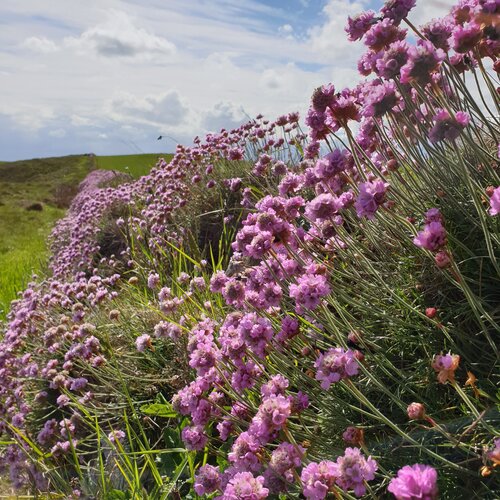I thought it pertinent that I would begin by sharing a little about the background of Armeria seeing as how I’dlike to start a National Collection of them.
They are a genus of small, flowering plants from the family ‘Plumbaginaceae’. Most are native to the Mediterranean area of Europe but some, like A. maritima, extend further across the northern hemisphere.
The plants are typically tolerant of dry and exposed conditions. They form a basal mound or mat of lanceolate (linear) leaves which can be needle-like or strap like with pompom like flowers held on stalks. Their flowers cover the entire range of shades from pure white to red, almost extending into purple. They are very long-flowering and I’ve had them in flower from March in the greenhouse, right up to November outside (from Spring sown individuals). The best flowering is seen throughout May here in the UK.
A. maritima is the most well-known wild species as it is a very common occurrence in coastal areas around Europe and North America, growing on walls, cliffs and exposed areas of ground. It can be pretty expansive over local areas and we have an old wall near us which is covered in head to toe with A. maritima. Some nice cultivars I have are ‘Rubrifolia’ with its red-coloured foliage and ‘Laucheana’ which has particularly lovely deep pink flowers and bright green foliage.

A. juniperifolia AGM (syn. A. caespitosa) is a commonly-seen, garden species and many popular varieties arise from this, like ‘Beven’s Variety’ AGM. They are both floriferous with the latter being more compact. Interestingly the naming of this species is something I need to investigate as the RHS recognise it as A. juniperifolia whilst Kew does not and instead names it as A. duriaei.
Another popular species that is often hybridised to produce new cultivars is A. pseudarmeria. Whilst I don’t find this as robust to the salt winds as A. maritima and A. juniperifolia, it is still a great choice for dry conditions. A popular range is the ‘Ballerina Series’ and the new ‘Dreameria (R) Series’ is another new one to keep an eye out for.

